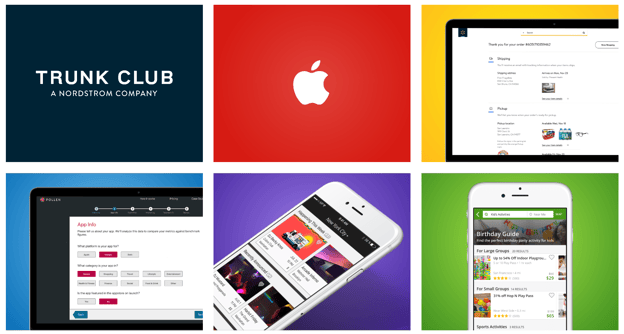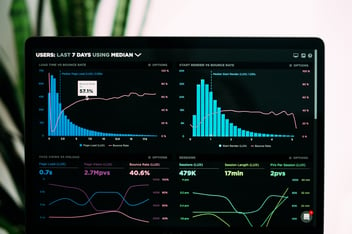The prospect of hiring a UX designer can be exciting. But before you hire someone, there are a lot of factors to consider:
-
How many years of experience does the person need?
-
What you need to budget to get the right person
-
How to tell accomplished designers from fake-it-till-you-make-it types
If you don’t know the answer to those questions, it’s all right. That’s what this post is for.
The job market right now
Over the last decade, the demand for user experience design has skyrocketed. The success of companies like Airbnb, Slack, and Lyft set new standards for digital UX design, and that has raised the expectations of consumers the world over.
Suffice it to say, that hiring a UX designer will cost you. The job market is competitive because the demand for UX designers is already high. And it’s only going to continue growing. CNN Money said being a UX designer was one of the best jobs in the U.S., and estimated the 10-year growth of this job market at 18%.
UX designer salaries by experience
Like any other job, experience plays a big part in the salary expectations of a UX designer. Someone less experienced may be more affordable, but they won’t be as skilled in their work as another designer with more experience.
Salaries also fluctuate a great deal across geo-belts. What a UX designer gets paid in San Francisco is not comparable to what a designer gets paid in Bozeman.
So if these numbers seem high for your budget, they actually might be. It all depends on how experienced a designer you want to add to your team and what the local job market looks like.
The following data and visuals are used at the courtesy of Glassdoor.
Junior UX designer salary
I’ve defined junior designers as professionals with 1-3 years of experience.
For me, designers who have zero years of experience are interns. They may have gone through a well-connected boot camp or something, but they likely haven’t done the type of work that constitutes on-the-job experience.
Junior designers are still honing their craft, so they’re usually ill-equipped to lead the entire strategy of a UX project. That said, these designers can still add tremendous value to your organization with their research and experience in design work.
Their average salary in the US across all geo-belts is $81,942.
Mid-level UX designer salary
Mid-level designers are practitioners with 4-6 years of experience. These designers will have worked on various projects and should be more than capable of planning and executing the UX strategy for your organization.
These designers should also have certain specialties in UX design, i.e., visual design, interaction design, or user research. Now, that doesn’t mean they can’t perform more than one specialty, but they’ll be more robust in certain areas.
That can be good if you know exactly what you need to hire for.
The average salary for a mid-level designer is precisely $94,606.
Senior UX designer salary
People with 7 or more years of experience in design can be considered senior designers. These are seasoned veterans who have designed more than their fair share of products and/or websites.
The main difference between these designers and their less experienced brethren is that senior practitioners can lead an entire team — or build one. These are people you want to hire if you’re considering building an entire in-house team.
The average salary for a senior UX designer in the US is $101,930.
Glassdoor has two additional tiers of experience for UX designers:
-
10 - 14 years, which has an average salary of $106,581
-
15+ years, which has an average salary of $110, 887
I haven’t separated these into their tiers because people with this amount of experience are still senior designers. Sometimes they have the title “principal designer,” but the job functions are equivalent.
How to hire the right UX designer
Getting a budget together is only half the battle. Now you have to hire someone, which means you’ll need to decipher which applicants are for real and which are graphic designers masquerading as user experience experts.
Here are a couple of surefire ways to tell the difference:
#1 Look for a portfolio of UX work with research
Anyone with some graphic design experience can go on the internet, read a few articles, and pretend to be a UX designer. What’s more complicated than creating a portfolio of actual work and then explaining that work in an interview to a natural person?
The first way to filter pretenders from practitioners is a viable portfolio of experience design projects. If your applicant has past work that looks good, then you can feel more comfortable about interviewing them.
In the interview, press them on the research behind their work. No two UX design projects are identical because no two audiences are identical. That means a good designer will be able to articulate where research fits into their process and what techniques they’ve used in the past.
Here’s a good portfolio from Mark Phan.
As you’d expect, his portfolio starts with examples of his best work.

Clicking on one of his projects gives you a description of the client and, most importantly, the research work Mark used to validate his decisions about the design of the UX. This is precisely what you should look for in every portfolio.
#2 Make sure they have a process
UX design is unique because it blends data and creativity. But blending the two means there’s a myriad of techniques and methods that can be applied to each project. Without a clear strategy to guide a project, everything can quickly go off the rails.
In the interview process, ask specific questions about the designer’s process. They should be able to walk you through a flexible yet consistent series of steps that begins with strategy, moves to user research, and ends with experience design and testing.
How to keep your new designer happy
All right, so you found the right person. Now what? You need to ensure they have enough work to stay busy.
If you’re working on one big project, you might be better off hiring a UX agency. However, if you can map out the experience in design work, you will have for at least the next two years, you should have plenty to keep your new designer entertained.
Another consideration is the type of work the designer will be doing. Keeping UX designers working on different types of projects — even if that work is simultaneous — can keep their creativity in high gear. Solving the same type of problem repeatedly can be monotonous and adversely affect the standard of the designer’s work.
***
Finding the right person can be difficult and expensive even in a job market flooded with UX professionals. In many cases, it’s just easier to work with an agency and hire an entire UX team. The price is often less expensive in the long run, and the quality of work will be higher because you have an entire team.
If that sounds interesting, click the lovely image below and request a free quote.




